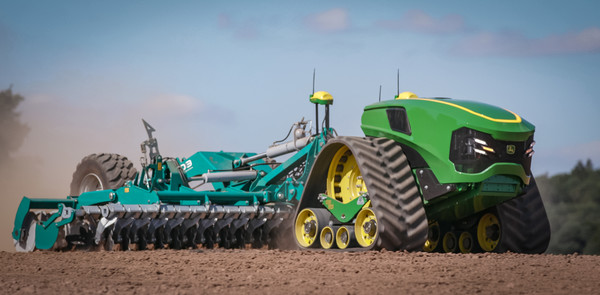
Autonomous robots, the components role
The development of autonomous mechanical vehicles has been made possible by the many profound innovations that the components industry has known over the last 30 years. These are the parts that, as in the case of AI, sensors and 4K cameras, form the mind and sensory apparatus of agricultural robots
Even today, when we think of the primary sector, we think of a traditional society based on manual labour, with little technology, and characterised by dry, basic lifestyles, marked by the rigorous timing of tasks in the fields. Thinking of the rural world brings to mind the idea of a fragile, low-productivity economy, vulnerable to the vagaries of the climate, the attacks from parasites and the impoverishment of the soil. Precisely because they are so closely linked to man's basic needs and to the socio-productive system that has accompanied a significant part of human progress, agricultural activities end up, wrongly, recalling that condition of uncertainty that has long characterised our 'being in the world'. For this very reason, ever since the invention of the first engines - steam engines, but above all internal combustion engines - the ambition to delegate work in the fields to machines has been cultivated, with the idea of industrialising agriculture by subjecting it to ever greater control over production factors. Moreover, in that exercise of imagination in which science fiction literature produces more or less futuristic scenarios, rural settings have always played a leading role. The conquest of a new frontier, be it technological or spatial, is marked - in novels as in feature films - by a revolution in agricultural practices. A revolution in which machines, or rather a system of machines, are the protagonists: intelligent, interconnected, autonomous. Machines capable of self-learning, self-correcting, self-repairing, self-powering and, therefore, of carrying out on their own all those operations that used to be carried out manually or under human control or direction. Autonomously guided tractors that plough the land, robot sprayers that move between the rows of vines to deliver targeted treatments, drones suspended in the air to monitor the water requirements of vegetation. And there's more: sensors able to detect the degree of ripeness of individual bunches of grapes, intelligent axles designed to optimise vehicle travel, electronic control units designed to manage vehicle functions and rationalise consumption, and electric motors with high autonomy. What only 30 years ago seemed to be a scenario set in a distant future is now a reality. Since the end of the 1980s, agricultural mechanics has made a great technological leap forward, which, in turn, has been made possible by extraordinary progress in the components sector. Innovative processes do not only involve machines as integrated systems, although they are much more tangible in this case, but also (and perhaps above all) the various parts that are part of those systems. This is the case, for example, with electronic devices. They are now produced using nanometric technologies that have made it possible to reduce the size of transistors down to 5nm, changing their behaviour and performance. Other innovations have affected chip architectures, communication buses and other digital components, making computing power grow exponentially rather than linearly. Research progress has made it possible to improve the performance of integrated circuits and to achieve considerable economies of scale, thus breaking down barriers of access to computing technologies. The development of high-resolution video cameras and their combination with AI, for example, has led to the development of photo-diagnostic technologies capable of analysing the vegetative state of a crop and identifying possible pathogens. No less significant is the progress made in the field of sensors, which can be considered as the true 'sensitive' apparatus of autonomous machines. Through sensors, the AI obtains a complex of information and parameters - the distance between the rows of a vineyard, the morphological characteristics of the soil, the water requirements of an individual plant, the possible presence of weeds - which determine how the machine, in total freedom, decides how to operate in the field. While many of these digital technologies - including robotics - have long been used in precision farming techniques and procedures, today the new frontier seems to be that of autonomous robots. Machines that, without any human intervention, choose what work to do, when and how to do it. In this scenario, of which we can now see the first outlines, there is also room for error because these machines are not designed to be perfect. Instead, they are designed to learn from a mistake, to self-correct immediately and to modify future behaviour on the basis of the error made. Just as a human being would do in his or her everyday life.








